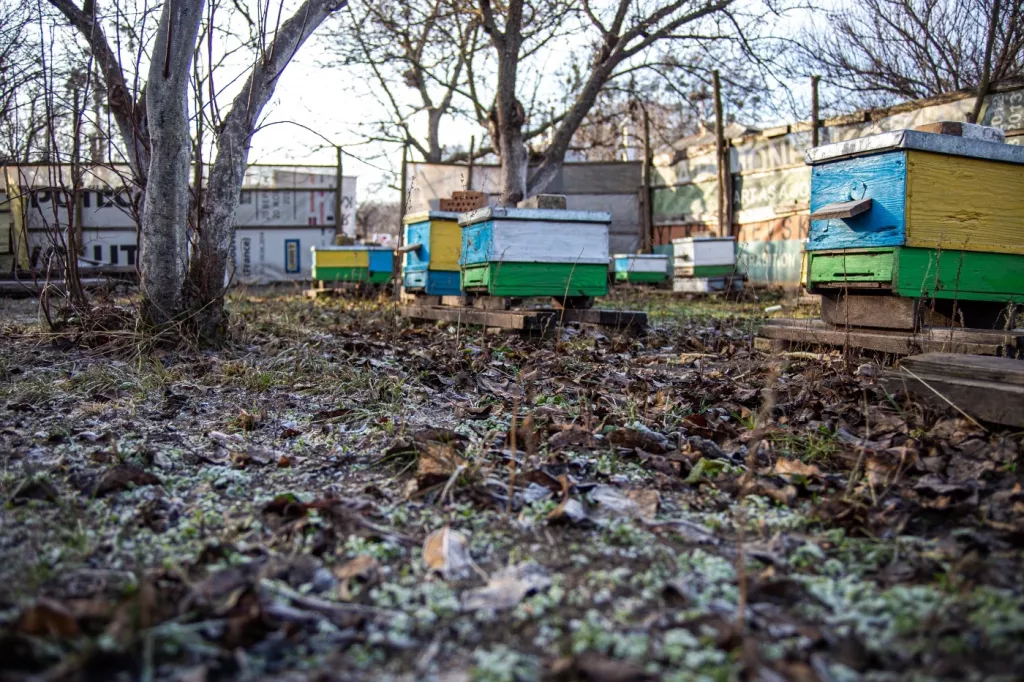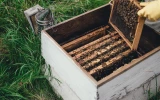Can Bees Live in Cold Climates? Temperature Ranges Explained
If you don't see bees during cold seasons, it doesn't mean they've ceased to exist. While, during this time, they don't work as much as they do in spring and summer, they do remain active. Amazingly, bees can thrive in a wide range of temperatures.
Bees can live in cold climates thanks to their adaptive instincts. Throughout winter, honey bees work together to maintain their heat and food source inside the hive, ensuring they'll survive until summer and spring. On the other hand, bumble bees just hibernate until the following season.
Bumble bees’ mechanism to survive cold climates is straightforward compared to honey bees. In this article, I will explain how these bees sustain themselves during the coldest season of the year. I will also discuss the appropriate temperature ranges for honey bees, including optimal and fatal temperatures and how they affect their bodies.
Summary
- Bees can live in cold climates through their adaptive instincts
- Bumble bees hibernate their way through the winter season
- Honey bees survive winter by generating their own heat and energy and having a sufficient amount of honey for consumption
- The lowest temperature that honey bees can withstand inside a cluster is approximately 55°F, while the lowest temperature they can take outside a cluster is approximately 46°F

On this page:
Bees in Cold Climates
Honey bees and bumble bees adapt differently in cold climates. Let's discuss how they survive winter separately.
Honey bees
In places with cold climates, honey bees go back to their hives during the winter when it is below 50 °F. They gather inside, keeping themselves warm until the season is over. The bees' readiness for the cold will determine whether the colony survives. They must prepare for the lengthy, chilly winter just like humans do. One of the pertinent preparations is to produce over 90 pounds of honey during the summer for them to survive the winter.
While bees can live in cold climates, they can only tolerate cold climates until a specific temperature. Once their body temperature reaches 41°F and below, sadly, the bee will die. Their muscles are already shivering at this temperature, and they cannot use them anymore to produce heat and stay warm.
Additionally, honey bees are more resistant to cold than the wind. In fact, the most deadly element to their survival is wind. Windchill is the single most dangerous element in cold climates that kills bees.
Bumble bees
In the case of bumble bees, you'll only find queen bumble bees during this time of the year. Only the queen bees survive the winter after the male drones and female worker bees pass away in the autumn. Bumble bee queens sleep during the winter to conserve energy. Throughout the winter, they construct a little nest or dig a burrow. In the fall, she overindulges and doesn't store honey in her nest as honey bees do.
After hibernating throughout the season, any queen that makes it through the winter will create her own nest in the spring and establish a new colony. She retains stored sperm from her fall mating and eggs inside of her, which is already enough to establish a new colony.
Temperature Ranges Relevant to Honey Bees
Generally, honey bees can tolerate temperatures within the range of 38°F to 113°F. However, a honey bee cluster's ideal core temperature in a winter hive is 95°F. The average temperature inside a cluster is 81°F, whereas the average temperature of the cluster's outer shell is 48°F. A cluster's maximum temperature has been measured to be around 100°F.
The lowest temperature that honey bees can withstand inside a cluster is approximately 55°F, while the lowest temperature they can take outside a cluster is approximately 46°F. It could withstand lower temperatures sometimes, but one thing is sure: 41°F and below is already deadly for them.
How Honey Bees Work Inside the Hive
To understand how bees work during winter, it is essential to understand the social structure of honeybees. It's composed of the worker, drone, and queen castes. The female castes—the workers and the queen—are left behind while the male drones perish in the winter.
Bee workers gather around the queen and young bees as soon as temperatures drop and food supplies dry up. The queen bee ceases to create eggs to sustain the hive's tight food supply. To allow the bees inside the cluster to consume the honey stored in the hive for the winter, the worker bees in the cluster close their eyes, contract their muscles quickly, and keep their heads pointing inward.
The wonders of working bees
Honey bees also use "heater bees," which vibrate their abdomens to force their muscles to contract vigorously. This heats their bodies and controls the colony's temperature. The bee may perform this motion to raise body temperature to approximately 111°F, which is 16°F above usual. These bees will scurry inside empty ones to keep the cells around them warm.
With their active wing muscles, the worker bees in the middle of the cluster are busily producing heat. In order to retain the warmth inside the cluster, those on its periphery will rest and create an insulating layer. These resting bees can also go to a honey cell with a cover and fill their crop. A bee can store this honey in her crop or release a small amount for digestion and energy consumption. Additionally, they can release some honey for other bees to use as a snack.
At some point, the bees in the cluster's center will also require a break. The outside bees will ultimately go back inward after making their way to the edge, warming up and working another shift as active heaters. Workers rotate in and out of the cluster all winter long.
The changing size of bee clusters
Depending on the circumstances, the bee cluster's size varies. The cluster shrinks when temperatures fall as bees huddle together to retain heat. They will spread out more widely and even open up airways if they get too warm, allowing extra heat to flow up and away and bring in fresh air from below. When the temperature permits, the cluster can enlarge, enabling individual bees to access more food in various hive areas. But when the temperature drops once again, they will tightly swarm back together wherever the bee population is at the time.
